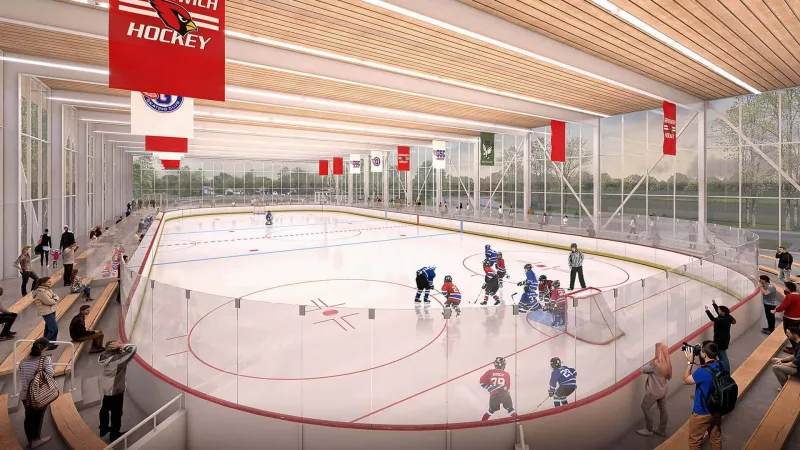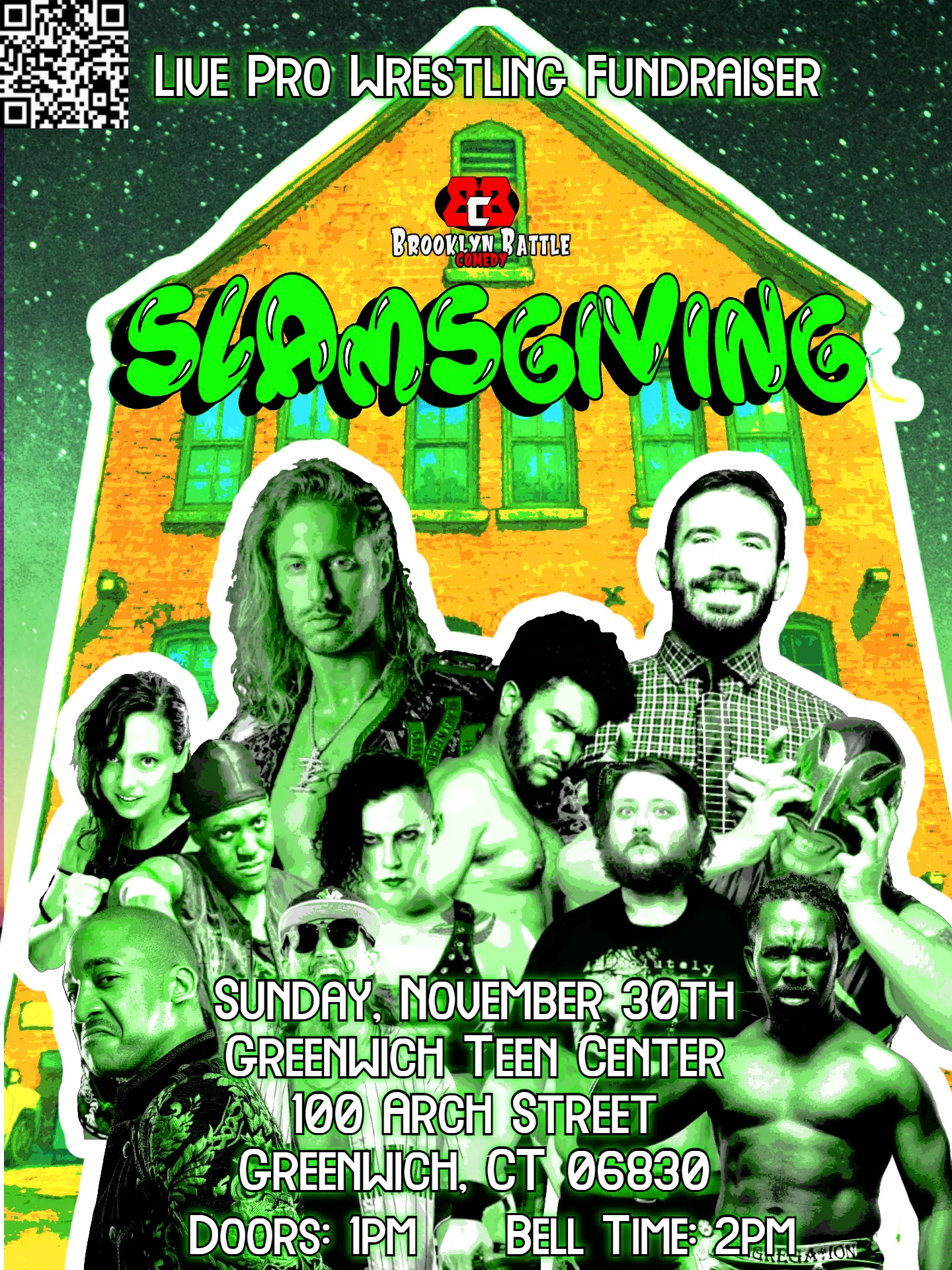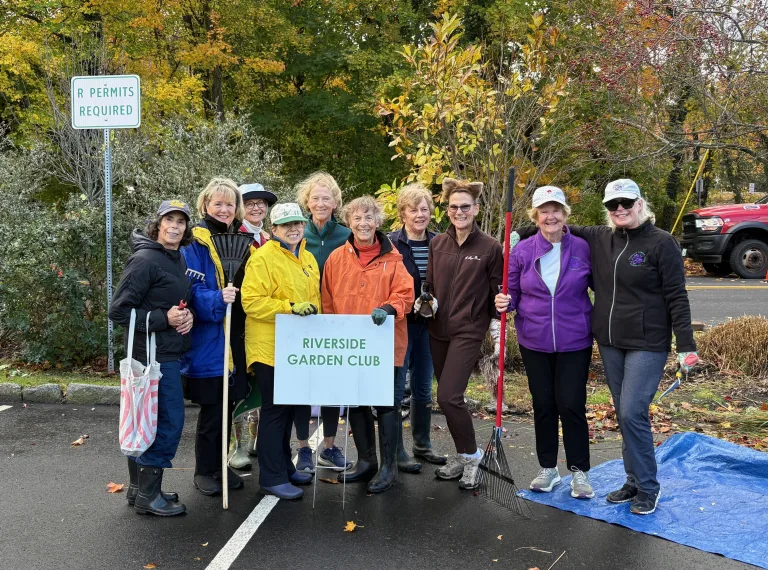
By Elizabeth Barhydt
On a brisk December morning, 9-year-old Mia zipped up her skating jacket and stepped onto the ice at the Dorothy Hamill Skating Rink, her laugh echoing through the decades-old facility. For Mia and other skaters, the Dorothy Hamill Skating Rink is a venue for both recreation and skill development. Beneath its surface lies a story of aging infrastructure, years of planning, and an implausible fight for its future.
“This rink is Greenwich’s heart,” said Bill Drake, Chairman of the Rink User Committee for Design and Planning. “It’s where generations have come together, and it’s time we ensure it’s safe for generations to come.”
A LEGACY OF COMMUNITY
Since its inception in 1971, the Dorothy Hamill Skating R ink has been a hub for Greenwich skaters. Originally an outdoor facility, it was enclosed and renamed in 1976 to honor hometown hero Dorothy Hamill, our Olympic gold medalist whose grace and determination inspired the world.
“This place is part of our identity,” Drake explained. “We’ve seen five-year-olds take their first skating steps here, high school hockey teams win championships, and families come together for public skate nights.”
The rink currently serves over 3,000 skaters annually, from figure skating enthusiasts to youth and adult hockey leagues. “Skating is part of New England’s DNA,” Drake said. “We skate because it’s who we are.”
First Selectman Fred Camillo added, “Having skated there in 1972 when it first opened as just a slab of ice and boards, I’ve seen how it’s been piecemealed together over the years. Today, it falls short against any other rink in Fairfield County, and probably in the state of Connecticut. It’s become an embarrassment.”
THE NEED FOR CHANGE
Despite its significance, the Dorothy Hamill Rink is struggling to keep up with the demands of modern use. Built piecemeal over decades, the facility now suffers from several critical issues:
SUBSTANDARD ICE SIZE: The rink’s dimensions are too small for regulation games, limiting its ability to host competitive events.
INADEQUATE LOCKER ROOMS: “We don’t even have showers,” Drake said. “You can’t have families and high school boys changing in the same cramped space. It’s not safe, and it’s not practical.”
SHARED BATHROOMS: The tiny bathrooms are shared by spectators and skaters/players, which isn’t proper.
AGING SYSTEMS: The rink’s outdated mechanical and structural systems require constant maintenance, driving up costs and threatening reliability.
“After years of use, it’s reached the end of its lifespan,” said Drake. Camillo echoed this, noting that when he was on first on the Planning & Zoning Board decades ago he was told that the rink was “not long for this earth” and that a new facility was necessary to meet modern standards way back then.
A DECADE OF PLANNING
The effort to replace the rink has been years in the making. In 2017, the Department of Parks and Recreation formed the Dorothy Hamill Skating Rink Reconstruction Committee to study the facility’s condition. In 2019, KG&D Architects issued their report concluding that renovating the rink would cost as much as building a new one—$17 million. The recommendation was clear: replacement was the better investment.
“That was the start,” said Drake. In 2021, First Selectman Fred Camillo created the Rink User Committee for Design and Planning. “We’ve had monthly meetings since then, countless presentations, and years of work to get to where we are today.”
The current plan involves a $24 million project to build a 40,671-square-foot, state-of-the-art facility within Eugene Morlot Memorial Park. Dubbed “the flip,” the project will construct the new rink on the existing baseball field while relocating the ballfield to the old rink site after its demolition. This ensures uninterrupted rink operations during construction and a larger, full-size, properly oriented baseball field. Camillo highlighted that the “flip” plan is the most efficient way to proceed with construction and is best in every way studied: “If we decided to keep it where it is, we’d need to do extra blasting due to the ledge. That would not only increase costs but also impact residents on Sherman Avenue. Moving it is the most effective way to protect them and get the construction done.”
UNDERSTANDING “THE FLIP”
Central to the redevelopment of the Dorothy Hamill Skating Rink is the concept of “the flip,” a carefully planned reconfiguration that addresses the challenges of replacing the aging facility while minimizing disruptions to the community.
“It’s as simple as it sounds,” said Bill Drake. “We build the rink where the baseball field is, and once the new rink is operational, we move the field. It’s a win-win for everyone involved.”
This approach also takes advantage of opportunities for solar panel installation, according to Camillo. “If we kept the rink in its current location, the trees would block the potential for solar panels,” he explained.
WHY REORIENTING THE BASEBALL FIELD MATTERS
The flip isn’t just about maintaining skating programs; it’s also an opportunity to improve the baseball field. Currently, the field suffers from significant design flaws that make it suboptimal for competitive play. Chief among these issues is its orientation, which positions some fielders facing directly into the afternoon sun.
“Right now, the way the field is positioned, players struggle with visibility,” Drake said. “Imagine trying to catch a pop fly while staring into the sun—it’s dangerous, and it’s not how a field should be designed.”
Way back in 2005, Murray Cook of Major League Baseball came to see the field and, according to Camillo, Cook said the field needed to be repositioned. “He also worked for the Yankees,” added Camillo.
By reorienting the field, the new layout will ensure better playability and safety for athletes. The updated design will also bring the field up to full regulation size, correcting current deficiencies in dimensions that limit its use for competitive games.
“This isn’t just a minor adjustment,” Drake noted. “It’s a vital improvement that will allow our strong teenage athletes to play on a proper field. The current setup isn’t fair to them, and this reconfiguration fixes that.”
In addition to addressing sunlight issues and field size, the relocation allows for better integration with the surrounding park. Improved vehicular circulation, pedestrian pathways, and enhanced green space will make the park more accessible and enjoyable for all visitors.
The new rink promises to address the facility’s shortcomings while enhancing the skating experience for all users. Key features include:
REGULATION-SIZE ICE SURFACE: Allowing competitive hockey games and figure skating events.
MODERN LOCKER ROOMS: With showers and ample space for teams.
ENERGY EFFICIENCY: A south-facing roof designed for solar panels, reducing environmental impact.
PUBLIC AMENITIES: Improved spectator seating, meeting rooms, and food truck accessibility for events. “This isn’t just a rink,” Drake emphasized.
“It’s a community space, and we’re building it to reflect that.”
OPPOSITION
For every opponent, there are dozens of supporters. A public survey conducted by Sports Facilities Advisory revealed that 2,189 respondents, or 84% of those responding favor the proposed plan. Additionally, emails to the Planning and Zoning Commission showed 136 letters in favor of the project compared to just eight against it.
Despite overwhelming support, the project has faced resistance from a small group of opponents. “There are four people who keep showing up to fight this,” Drake said. “They’re saying it’ll ruin the park, which is simply not true.”
One of the most vocal concerns involves the Byram Veterans Memorial Tree Grove, a 0.65- acre area within the park. Critics argue that the new rink’s proximity to the grove could harm its integrity. Drake countered, “The tree grove is permanently protected by a land covenant. We’re not touching it. The architects have ensured that green space in the park will slightly increase, not decrease.”
Camillo added, “We’re not only getting a beautiful new building but also enhancing the Veterans Memorial Grove, which right now doesn’t even have a sign on it. We’re also improving the playground and adding a walking track around the property to benefit everyone in the neighborhood.”
Another point of contention is the claim that alternative sites haven’t been fully considered. “We’ve looked at every feasible location,” Drake said, listing options from Roger Sherman Baldwin Park, Greenwich Point, the Eastern Greenwich Civic Center, Western Middle School, the Pinetum/Pomerance/Tuchman property, the Boys and Girls Club parking lot, the Island Beach parking lot, and the baseball field behind town hall. After years of examination, none of these alternatives are practical. “This plan is the best solution.”
THE REAL COST OF CLOSURE: MORE THAN LOST ICE TIME
For a community like Greenwich, where ice sports are deeply ingrained in the town’s fabric, a temporary closure of the Dorothy Hamill Skating Rink during construction would represent far more than just lost ice time. It would mean the suspension—or outright cancellation—of the programs, traditions, and opportunities that have made the rink a cornerstone of the town for more than 50 years.
“This isn’t just about a temporary inconvenience,” said Drake. “If the rink were to shut down for two years, every program and every use of this space would vanish completely. And that’s not something the community can easily recover from.”
IMPACT ON YOUTH PROGRAMS
The rink is home to a variety of youth programs that go beyond teaching skating skills. For children, it’s often their first introduction to teamwork, discipline, and resilience.
• Figure Skating Lessons: Hundreds of young skaters, many of whom train under expert instructors like Nancy Leamy, would lose access to lessons that have nurtured their confidence and skills. For many, these lessons are not just recreational—they’re a stepping stone to competitive skating careers.
• Youth Hockey: The Greenwich Cardinal Youth Hockey Program, which provides an affordable pathway to hockey for local kids, would be particularly hard-hit. “It’s not just about games,” Drake explained. “Hockey teaches kids about commitment, teamwork, and how to deal with both wins and losses. Without a rink, those lessons disappear.”
• High School Teams: Greenwich High School’s boys’ and girls’ hockey teams, including junior varsity and varsity, rely on the rink for practices and home games. If the rink were closed, the teams would have to scramble to rent ice time at other facilities if such ice time is even available—an expensive and logistically challenging prospect that could result in games being canceled altogether.
A BLOW TO LOCAL FAMILIES
For many families, the rink is a vital part of their weekly routine. Public skating sessions offer affordable, healthy recreation for all ages, while holiday-themed events provide opportunities for cherished traditions.
“If the rink closes, where do families go?” asked one parent, whose daughter takes figure skating lessons. “Not every family can afford private rinks or travel to other towns.”
Drake echoed this sentiment, emphasizing the ripple effects of a two-year closure. “If the rink shuts down, you’re not just putting ice sports on pause—you’re dismantling a piece of the town’s social fabric. And rebuilding that after two years is incredibly difficult.”
The closure of the rink would also have a financial impact on the town and local businesses. Coaches, instructors, and rink staff would face job interruptions, while nearby businesses that rely on rink visitors—like coffee shops and restaurants—would see a decline in customers.
“You don’t get 84% support for anything,” Drake said. “This rink has united the town in a way few things can.”
For skaters like Mia and her family, the rink is deeply personal. “My mom learned to skate here, and now I’m learning too,” Mia said, her face lighting up as she practiced a spin.
“This is where kids learn discipline, teamwork, and resilience,” said one longtime hockey coach. “Losing it, even for a short time, would be devastating.”
WHAT’S NEXT?
The project recently received Municipal Improvement (MI) status from the Planning and Zoning Commission, a critical milestone in its approval process. The next steps involve securing $1.2 million for final architectural designs in 2026, followed by an estimate for construction in 2027. If all goes as planned, the new rink will open in the fall of 2028.
“This is a long journey, but it’s worth it,” Drake said. “We’re building something beautiful—something that will last.”





